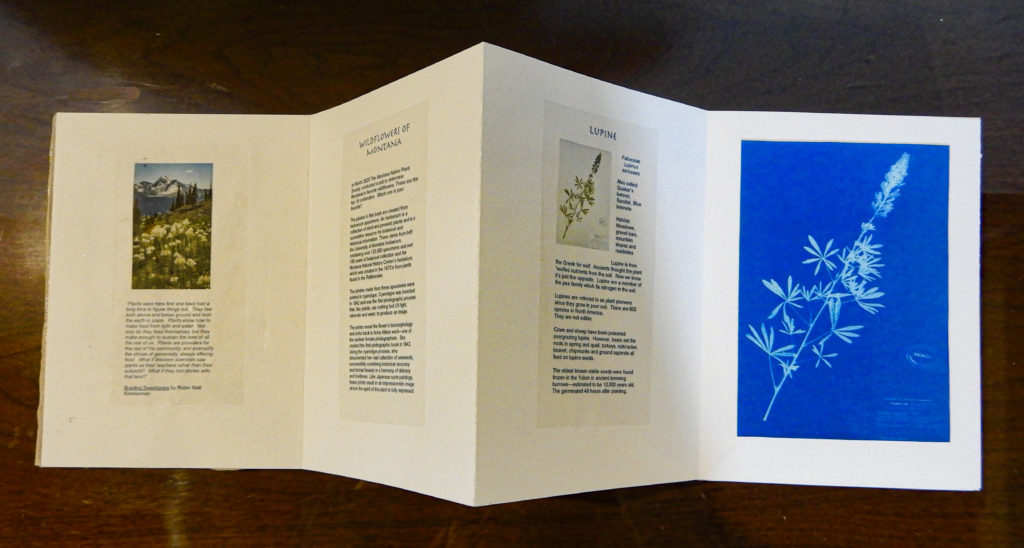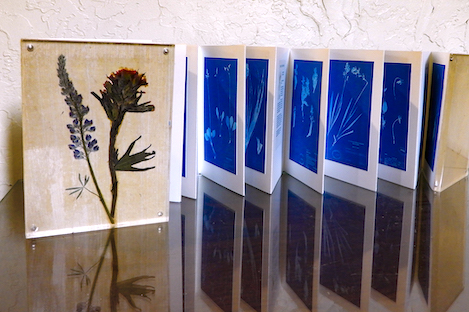
“Plants were here first and have had a long time to figure things out. They live both above and below ground and hold the earth in place. Plants know how to make food from light and water. Not only do they feed themselves, but they make enough to sustain the lives of all the rest of us. Plants are providers for the rest of the community, and exemplify the virtues of generosity, always offering food. What if Western scientists saw plants as their teachers rather than their subjects? What if they told stories with that lens?” Braiding Sweetgrass by Robin Wall Kimmerman
Last December, before Covid, I applied for theartist-in-residence program at Glacier National Park. I had hoped to create an artist’s book using some of the herbarium specimens (a collection of dried and pressed plants and is a cumulative resource for botanical and historical information) that V.V. Shay collected in the Belly River during the 1980’s. I wanted to present them as cyanotypes and include information on the habitats and plant communities where these plants live, as well as traditional Native American, specifically Blackfeet, uses.
Unfortunately, due to the pandemic, Ted and I will not be able to return to the park this year as volunteers. Hopefully, the following summer we will again be in the Belly River and I will be able to work on my project.
But I didn’t want to let go of the idea for an artist’s book created from an herbarium and so, for the spring luncheon (virtual) fundraiser for the Montana Natural History Center, I decided to create a mini-version of my original project using the University of Montana Herbarium and the plants chosen in a poll conducted in March by The Montana Native Plant Society as Montana’s favorite wildflowers.
Using photographs of the 16 specimens, I made digital negatives and then printed them in cyanotype. Cyanotype was invented in 1842 and was the first photographic process that, like plants, uses nothing but UV light, minerals and water, to produce an image.
The prints reveal the flower’s biomorphology and echo back to Anna Atkins work—one of the earliest female photographers. She created the first photographic book in 1843. Using the cyanotype process, she documented her vast collection of seaweeds, successfully combining “botanical accuracy and formal beauty in a harmony of delicacy and boldness.” Like Japanese sumi paintings, these cyanotype prints result in an impressionistic image where the spirit of the plant is fully expressed.
I pressed some of our early spring wildflowers (lupine and paintbrush) and displayed them under the plexiglass book cover. I included the flower’s unique story and made an accordion style book. It was a fun project and really showcases the beauty of these specimens—some collected a hundred years ago.

